Related Research Articles
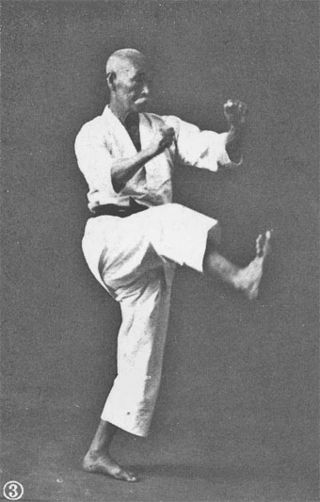
Karate (空手) is a martial art developed in the Ryukyu Kingdom. It developed from the indigenous Ryukyuan martial arts under the influence of Chinese martial arts, particularly Fujian White Crane. Karate is now predominantly a striking art using punching, kicking, knee strikes, elbow strikes and open-hand techniques such as knife-hands, spear-hands and palm-heel strikes. Historically, and in some modern styles, grappling, throws, joint locks, restraints and vital-point strikes are also taught. A karate practitioner is called a karateka (空手家).

Kickboxing is a full-contact combat sport based on punching and kicking. The fight takes place in a boxing ring, normally with boxing gloves, mouth guards, shorts, and bare feet to favor the use of kicks. Kickboxing is practiced for self-defense, general fitness, or for competition. Some styles of kickboxing include: Karate, Muay Thai, Japanese kickboxing, Sanda, and Savate.
Martial arts are codified systems and traditions of combat practiced for a number of reasons such as self-defense; military and law enforcement applications; competition; physical, mental, and spiritual development; entertainment; and the preservation of a nation's intangible cultural heritage.

Taekwondo, Tae Kwon Do or Taekwon-Do is a Korean form of martial arts involving punching and kicking techniques, with emphasis on head-height kicks, spinning jump kicks, and fast kicking techniques. The literal translation for tae kwon do is "kicking", "punching", and "the art or way of". They are a kind of martial arts in which one attacks or defends with hands and feet anytime or anywhere, with occasional use of weapons. The physical training undertaken in Taekwondo is purposeful and fosters strength of mind through mental armament.
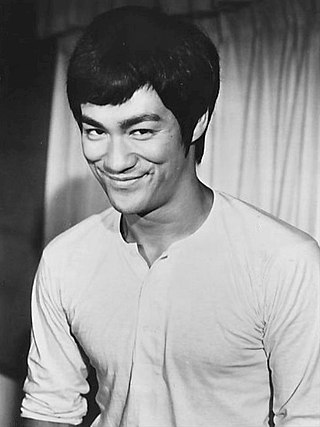
Bruce Lee was a Hong Kong and American martial artist, actor, director, and philosopher. He was the founder of Jeet Kune Do, a hybrid martial arts philosophy drawing from different combat disciplines that is often credited with paving the way for modern mixed martial arts (MMA). Lee is considered by critics, media, and other martial artists to be the most influential martial artist of all time and a pop culture icon of the 20th century, who bridged the gap between East and West. He is credited with promoting Hong Kong action cinema and helping to change the way Asians were presented in American films.
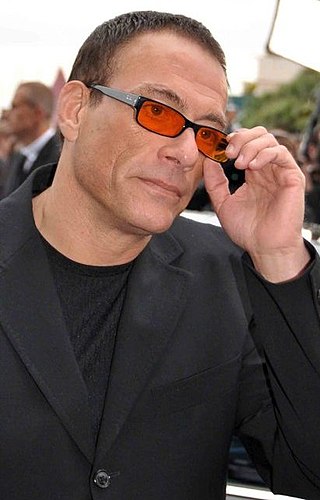
Jean-Claude Camille François Van Varenberg, known professionally as Jean-Claude Van Damme, is a Belgian actor, martial artist, filmmaker, and fight choreographer. Born and raised in Brussels, Belgium, at the age of ten his father enrolled him in martial arts classes, which led to Van Damme participating in several competitions. He was a member of the Belgium Karate Team when it won the European Karate Championship on 26 December 1979. With the desire of becoming an actor, he moved to the United States in 1982, where he did odd jobs and worked on several films, until he got his break as the lead in the martial arts film Bloodsport (1988).
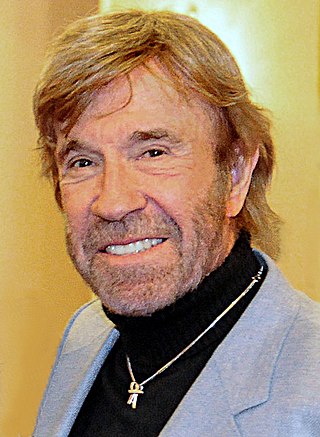
Carlos Ray "Chuck" Norris is an American martial artist and actor. He is a black belt in Tang Soo Do, Brazilian jiu jitsu and judo. After serving in the United States Air Force, Norris won many martial arts championships and later founded his own discipline Chun Kuk Do. Shortly after, in Hollywood, Norris trained celebrities in martial arts. Norris went on to appear in a minor role in the spy film The Wrecking Crew (1969). Friend and fellow martial artist Bruce Lee invited him to play one of the main villains in Way of the Dragon (1972). While Norris continued acting, friend and student Steve McQueen suggested he take it seriously. Norris took the starring role in the action film Breaker! Breaker! (1977), which turned a profit. His second lead Good Guys Wear Black (1978) became a hit, and he soon became a popular action film star.
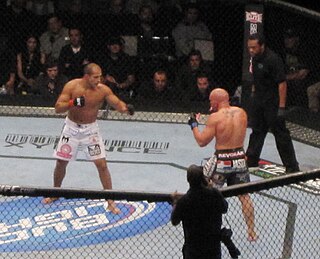
Mixed martial arts (MMA) is a full-contact combat sport based on striking, grappling and ground fighting, incorporating techniques from various combat sports from around the world. The first documented use of the term mixed martial arts was in a review of UFC 1 by television critic Howard Rosenberg in 1993.

Kalaripayattu is an Indian martial art that originated in modern-day Kerala, a state on the southwestern coast of India. Kalaripayattu is known for its long-standing history within Indian martial arts, and is one of the oldest surviving martial arts in India.

Kyokushin (極真) is a style of karate originating in Japan. It is a style of stand-up fighting and is rooted in a philosophy of self-improvement, discipline, and hard training.

Tang Soo Do refers to a Korean martial art based on Karate and may include fighting principles from taekkyeon, subak, as well as northern Chinese martial arts. Before the Nine Kwans united and formed the martial art Taekwondo, Tang Soo Do was used by select Kwans to identify their Karate-derived martial arts style.
This martial arts timeline is designed to help describe the history of the martial arts in a linear fashion. Many of the articles for particular styles have discussions of their history. This article is designed to help visualize the development of these arts, to help better understand the progression of the separate styles and illustrate where they interrelate.
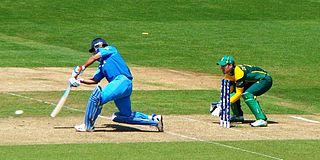
Sport is a significant part of life in India. The country has a very long sports history, with sports being a part of tradition, culture, finance and entertainment. People in India closely follow various sports and enthusiastically participate in them. Cricket is the most popular spectator sport in the country, and citizens often play it as a recreational activity; it generates the highest television viewership, and features full-capacity audiences in stadiums during international and Indian Premier League (IPL) matches. It is part of popular culture. However, in more recent decades, football has also become another popular sport in terms of broadcast viewership and stadium audience attendance. Kabaddi has grown into the mainstream, as well as badminton, tennis, and athletics. Kho-kho has grown into becoming the fourth-most viewed sport in India. India are the one of the power houses in field hockey. India won World Cup & multiple medals in field hockey in Olympics. During that time, Dhyan Chand was a notable player. Sports such as swimming and badminton are played as recreational activities and for exercise.

Popular games and sports in Pune include athletics, cricket, basketball, badminton, field hockey, football, tennis, kabaddi, paragliding, kho-kho, rowing and chess. The Pune International Marathon is an annual marathon conducted in Pune. The 2008 Commonwealth Youth Games were held in Pune.
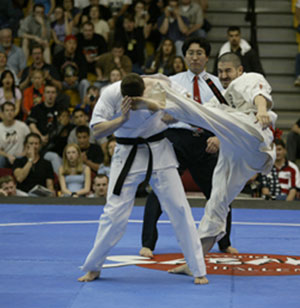
American Karate was first introduced to American service men after World War II by Japanese and Okinawan karate masters.
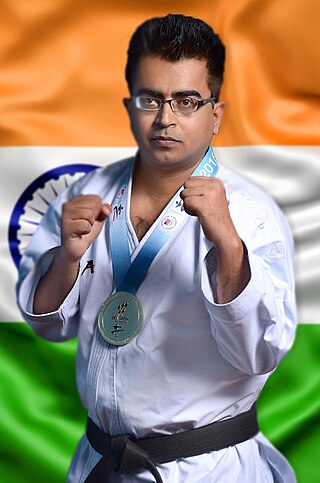
Yashpal Singh Kalsi is a martial artist from Delhi. He has been characterised as 'the pioneer of the self-defence industry in India'.
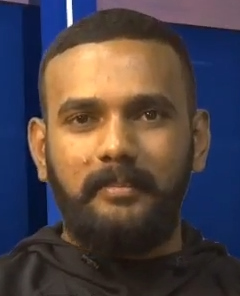
Cherupalli Vivek Teja is an Indian martial artist. He has been a martial arts fighter for 19 years. Cherupalli is the founder of the Human Weapon International, a self-defense training organization. Vivek Teja Cherupalli claims that he has trained more than 19,000 women in the art of self-defense. The 27-year-old Cherupalli, who has Judd Reid as his coach, is also training to be a light heavyweight (75 kg) category boxer.

The Karate India Organisation(KIO) replaced Karate Association of India(KAI) as the national governing body for Karate in India on confirmation from World Karate Federation (WKF) on 15 November 2021.
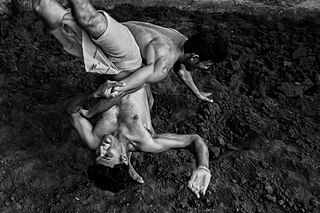
Gatta gusthi is a form of submission wrestling practiced in Kerala, India. It is competed inside an open ring on the ground, usually on a beach, known as godha. Wrestlers are called phayalvans. The sport consists of around 100 techniques. Gatta gusthi was popular in the state until the arrival of freestyle wrestling and karate in late 1960s. Its freestyle form is known simply as gusthi.
Premjit Sen with the title Hanshi is an Indian martial artist. He twice was gold medalist in world cup and the current ‘A’ Grade referee and judge of Kumite and Kata, respectively in World Karate Federation (WKF). Sen was awarded Times Men of the Year (2022). He serves as Chairman of the Referee Commission of Karate India Organisation (KIO) and the President of Karate Association of Bengal (KAB).
References
- ↑ "Karate and Tae Kwon Do vie for supremacy". India Today . Retrieved 7 December 2017.
- ↑ Breckenridge, Carol Appadurai (7 December 1995). Consuming Modernity: Public Culture in a South Asian World. U of Minnesota Press. ISBN 9781452900315 . Retrieved 7 December 2017– via Google Books.
- ↑ "Karate row ends in state". Telegraphindia.com. Archived from the original on 1 April 2019. Retrieved 7 December 2017.
- ↑ "Police raid leaves karate officials red- faced". In.news.yahoo.com. Retrieved 7 December 2017.